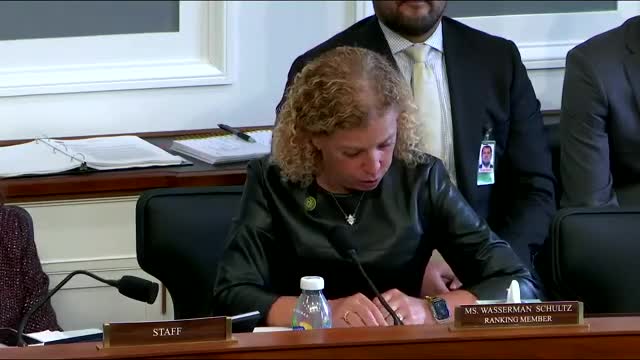VA prioritizes women's health as enrollment of women veterans reaches record high
This article was created by AI summarizing key points discussed. AI makes mistakes, so for full details and context, please refer to the video of the full meeting. Please report any errors so we can fix them. Report an error »

During a recent oversight hearing, the U.S. House Committee on Appropriations spotlighted the pressing need for enhanced funding within the Veterans Health Administration (VHA) to address a potential shortfall in fiscal year 2025. A significant focus of the discussion was on women's health, as the fastest-growing demographic among veterans increasingly requires specialized care.
The Under Secretary for Health emphasized the VHA's commitment to women's health, noting that over 50,000 women veterans enrolled in the system last year alone. This surge underscores the urgent need for gender-specific healthcare providers, particularly in areas such as intimate partner violence, maternity care, and mental health services. The VHA has made strides in hiring more female providers and improving access to essential services, including mammograms and maternity care coordination, extending support for new mothers up to a year post-birth.
However, the discussion revealed concerns about the VHA's budget constraints. The Under Secretary indicated that filling the anticipated shortfall would be crucial for expanding the workforce, which is essential for meeting the diverse healthcare needs of women veterans. The VHA's ability to retain and hire more frontline employees hinges on securing additional funding, which is currently being sought through supplemental requests.
Committee members also raised alarms about potential workforce reductions under a new administration, warning that cuts to civilian employees could severely impact healthcare services for veterans. With approximately 30% of the VHA's workforce being veterans themselves, any reduction could undermine the quality of care provided.
In response to specific regional concerns, such as staffing shortages at the St. Augustine clinic in Florida, the Under Secretary assured that efforts are underway to bolster call center staffing to improve service delivery. The VHA's commitment to addressing these challenges remains strong, but the path forward is contingent on securing the necessary funding to support both current and future healthcare demands for veterans.
The Under Secretary for Health emphasized the VHA's commitment to women's health, noting that over 50,000 women veterans enrolled in the system last year alone. This surge underscores the urgent need for gender-specific healthcare providers, particularly in areas such as intimate partner violence, maternity care, and mental health services. The VHA has made strides in hiring more female providers and improving access to essential services, including mammograms and maternity care coordination, extending support for new mothers up to a year post-birth.
However, the discussion revealed concerns about the VHA's budget constraints. The Under Secretary indicated that filling the anticipated shortfall would be crucial for expanding the workforce, which is essential for meeting the diverse healthcare needs of women veterans. The VHA's ability to retain and hire more frontline employees hinges on securing additional funding, which is currently being sought through supplemental requests.
Committee members also raised alarms about potential workforce reductions under a new administration, warning that cuts to civilian employees could severely impact healthcare services for veterans. With approximately 30% of the VHA's workforce being veterans themselves, any reduction could undermine the quality of care provided.
In response to specific regional concerns, such as staffing shortages at the St. Augustine clinic in Florida, the Under Secretary assured that efforts are underway to bolster call center staffing to improve service delivery. The VHA's commitment to addressing these challenges remains strong, but the path forward is contingent on securing the necessary funding to support both current and future healthcare demands for veterans.
View full meeting
This article is based on a recent meeting—watch the full video and explore the complete transcript for deeper insights into the discussion.
View full meeting